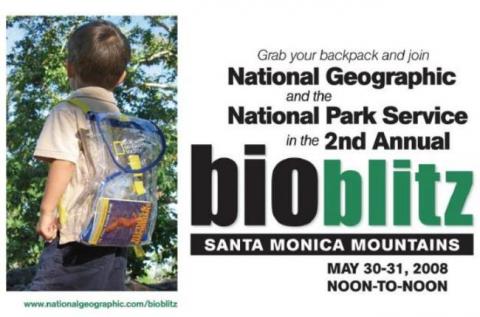When people talk about national parks, the discussion usually revolves around vacations, not biodiversity. And yet, America's national parks are biodiversity sinks. How extensive those sinks are, well, that's a good question. It's one researchers are trying to answer through All Taxa Biodiversity Inventories.
Since 1998, researchers at Great Smoky Mountains National Park have identified more than 874 species new to science, and 5,207 species previously unknown to Great Smoky Mountains. Among the highlights? A species of moth, genus Ligdia, that hadn't been known to exist in North America.
Great Smoky Mountains, which has three more years to finish its ATBI, is not the only park reporting new species. Back in January 2006 news broke that 27 new bug species had been found in caves found in Sequoia and Kings Canyon national parks. Taxa inventories also have been ongoing at Point Reyes National Seashore and at Big Thicket National Preserve.
This coming weekend the National Park Service, in collaboration with the National Geographic Society, will host a 24-hour "BioBlitz" at Santa Monica Mountains National Recreation Area. During that long day, researchers will explore the NRA's roughly 153,000 acres to see what species they can find. A previous BioBlitz in the park system, held at Rock Creek Park in Washington, D.C., last year, turned up 666 plant and animal species.
As the country becomes ever-more urbanized, it's increasingly important that we examine and describe the existing biodiversity to develop, if nothing more, a baseline. We already know that the national parks, thanks to their protected status and the National Park Service's mission to preserve resources, hold rich biological resources. But the extent of that richness is an unknown.
In the wake of this weekend's blitz at Santa Monica NRA, the Park Service has lined up a series of additional blitzes: Big Thicket National Preserve will host a bioblitz June 13-14, Acadia National Park on August 8-11, and Boston Harbor Islands National Recreation Area will hold an inter-tidal bioblitz on August 18. Additional events and surveys will occur in Channel Islands National Park, Death Valley National Park, Point Reyes National Seashore, Yosemite National Park, and Yellowstone National Park.
With the developing results from these events, the value of expanding ATBIs across the park system becomes more important.
John Dennis, the Park Service's deputy chief scientist, says such work goes right to the agency's basic mission.
"The scientific exploration that is characteristic of the All Taxa Biodiversity Inventory develops important, base information for improved scientific understanding and park management," he says. "As inventories are undertaken in more and more parks throughout the national park system, they will, over time, provide comprehensive inventories of all life-forms.
"Knowledge from these inventories, integrated with results from other scientific studies, will help park managers understand better how species interrelate and function in self-sustaining ecosystems," adds Mr. Dennis. "Because of their relatively undisturbed ecosystems, national parks are particularly well-suited to the scientific of biodiversity. This exploration, vital to park preservation today, will become even more important in the future."
In truth, the national park landscape is largely unexplored territory. Great Smoky Mountains, which covers roughly 500,000 million acres, is thought to contain "one of the richest and most diverse collections of plants and animals in the temperate world." And yet, it's estimated that while more than 100,000 species inhabit the park, just a tiny fraction have been identified.
Not only does that unknown limit our scientific knowledge and restrict discoveries that could help advance science, but without knowing the extent of biodiversity in a park, officials can't adequately manage the park.




Add comment